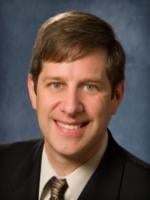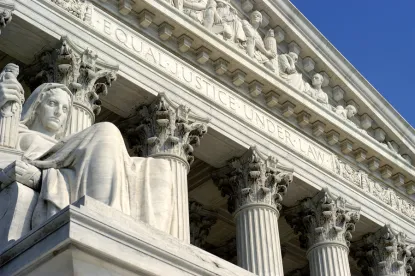When the Supreme Court invalidated the hedging claims in the Alice decision, do you think they had any idea the decision would lead to the following claim being invalidated as being directed to an abstract idea?
1. A system for monitoring and reporting a human status parameter of an individual, said system comprising:
a. a sole, unitary housing configured to be removably mounted on said individual’s body;
b. a first physiological sensor which automatically generates a first electronic sensor signal representative of a first physiological parameter of said individual, said sensor mounted within said housing;
c. a second sensor, mounted within said housing, which automatically generates a second electronic sensor signal representative of at least one of a contextual and a second physiological parameter of said individual;
d. a processing unit, mounted within said housing and in electronic communication with said sensors to receive said first and second electronic sensor signals, said processing unit generating an electronic output signal representative of said individual’s sleep-related analytical status data from at least one of said first and second electronic sensor signals, wherein the sleep-related analytical status data includes sleep onset and wake information that is derived from the at least one of said first and second electronic sensor signals; and
e. a transceiver unit, mounted within said housing and in electronic communication with said processing unit which receives said electronic output signal from said processing unit, said transceiver unit generating an electronic transmission output signal for reception by an another device.
I just don’t think a claim to a system for monitoring and reporting sleep-related analytical status data collecting using multiple sensors that generate electronic signals indicative of some physiological parameter was within the ambit of cases the Supreme Court was trying to deem ineligible with the Alice decision. The ITC decision discussed below, seems to be a perfect demonstration of how current §101 jurisprudence is out of control. In a recent ITC decision an ALJ struck down US 8,961,413 and US 8,073,707 as being directed to the abstract idea of tracking sleep. While the claims certainly involve the abstract idea of tracking sleep, this decision is concerning in that the claims (exemplary claim reproduced above) literally recite multiple sensors collecting physiological data and a processor for outputting a signal representative of sleep-related analytical status based on one or more of the sensor signals. The ALJ’s position appears to be predicated on a finding that the claimed limitations could be performed mentally, or where equivalent to human mental work.
On the surface, this appears to be a very dubious position, as the sensors recited in the claims are likely monitoring physiological parameters not readily observable. Additionally, the processing of the electronic signals to generate sleep-related analytical status data, also seems difficult to equate to something routinely done with pencil and paper. The ALJ’s order does highlight numerous statements from the specification indicating (admitting, if the passages are not wildly out of context) that the sensors and much of the related processing were well known. It appears that these statements from the specification may have had a major impact on the direction of this decision (I not studied the specification to determine the extent of the admissions). However, this portion of the order does emphasize an important practice tip regarding prior art or well-known techniques – tread carefully and be sure to emphasize the inventive aspects of the disclosure.
I have encountered few (if any) patent examiners that would not have identified admitted prior art within an application (as asserted by the ALJ). Accordingly, it seems a reasonable assumption that the claims recite something inventive over these admissions, or these claims would never have been granted. Further, and more importantly, the ALJ should have deferred analysis of the Novelty and Inventiveness (non-obviousness) of the claims to a more appropriate time and under the proper sections of the statue (§§ 102 & 103). A sampling of troubling statements from order (given the seemingly technological nature of the claimed subject matter – collecting data with sensors and determining sleep patterns). “The ‘413 patent, like other “methods of organizing human activity” that collect and manipulate data using a general-purpose computer, discloses an abstract idea “directed towards ineligible subject-matter.” Intellectual Ventures, 792 F.3d at 1367-68. See Alice, 134 S. Ct. at 2356 (noting that the concept of risk hedging and intermediated settlement are methods of “organizing human activity.”)”
The ‘413 patent does not seem like a method of organizing human activity. “In the present case, monitoring sleep patterns similarly is an abstract idea, and using generic sensors and computer processors does not make claim 1 of the ‘413 patent less abstract. As set forth in the Ultramercial decision, the process of collecting data, organizing it in a computer database, and generating reports from the database to be communicated to the product’s user is “an abstraction.” 772 F.3d at 715 (finding ineligible a method for advertising and distributing content over the Internet).” The ALJ compares the sensor data collected while a person is actually asleep, to a 17th century English diarist recording daily events (while awake). (see pages 14 – 15.) Mental steps, methods of organizing human activity, diary keeping … it is hard to discern how one can reasonably equate the claimed subject matter to any of these concepts. If these claims were actually afforded the presumption of validity they deserved, how can the inventive nature of the claims simply be dismissed without evidence or any rational reasoning?
Unfortunately, this case is likely not as significant an outlier as it appears; and may represent an ever growing list of cases where §101 is used as a blunt instrument to invalidate patents the decision maker believes were inappropriately granted. If there truly was no “inventive concept” recited in the invalidated claims, as claimed by the ALJ, then prior art should be readily available to invalidate the claim properly under §§102 and/or 103. However, like we are seeing in far too many cases these days, it is far more expedient to label the claims as directed to an abstract idea and invalidate them under §101, as no evidence or difficult work is involved. In the end, one has to wonder what the Justices on the Supreme Court would think of this decision.



 />i
/>i
